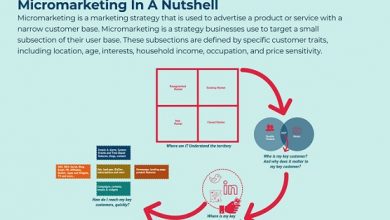Psychosocial risks in companies what they are and how to combat
It is common to believe that psychological well-being is addressed exclusively in clinical contexts, such as in health centers or in the psychologist’s office during psychotherapy sessions. In this article we will provide yoiu the Psychosocial risks in companies.
However, although these areas of intervention are very important for psychologists, their work goes far beyond this type of situation.
One of the most relevant sources of psychological advice is found, for example, in companies, in the organizational world. And, in this context, there is no lack of work to be done, exactly: today it is estimated that around 30% of job losses are rooted in psychosocial risks such as stress, fear of communication problems, fatigue, decrease in mood, etc.
In these lines, we will see how to work in psychology to reduce psychosocial risks in companies.
What are the psychosocial risks?
In the organizational context, psychosocial risks are those patterns of interaction between the individual and his environment that increase the chances of a deterioration in people’s psychological well-being and the quality and quantity of their work. Psychological health and performance go hand in hand, which is why companies that take steps to avoid psychosocial risks have several advantages, as we will see.
Thus, the very term “psychosocial risks” tells us what the nature of this concept is: they are interaction-based realities and are not found only in the workspace or in each of the workers individually.
In other words, there are psychosocial risks in the movement and in the interaction between everything that constitutes it (including its workers), the dynamism with which companies struggle to achieve their goals and adapt to new challenges The environment increases.
As a psychologist specializing in anxiety and stress issues and cognitive-behavioral psychology, I have seen that the need for dynamism misunderstood by corporate leadership can be totally counterproductive, causing psychosocial risks to physical health. and mental health of workers. Being dynamic does not consist in constantly pressing the accelerator, but adapting to new times and new opportunities means having time to train, rest and work on the problems you have.
Why do these harmful psychosocial phenomena appear?
Psychosocial risks to the mental and physical health of a company’s workforce can degenerate into relatively varied problems and disorders: sleep disturbances, inadequate anger management and irritability, psychosomatic disorders, panic attacks, professional attrition syndrome… psychological phenomenon to highlight and, at the same time, it is common to be present in all the others: excessive and prolonged stress.
This type of “pathological” stress is what can lead a worker to begin his descent towards significantly deteriorating health. Being very stressed means feeling insecure when deciding what to do, which causes delays in production. It also frequently causes insomnia, with the resulting discomfort associated with difficulties concentrating on a task.
The fear of facing the problems that stress has contributed to creates another additional problem, procrastination, or the tendency to constantly postpone our responsibilities so that we can keep them out of our minds.
And if that weren’t enough, we must add to all this that, when working in interaction with other people, you can also feel fear of communicating bad news, guilt for feeling responsible for a decrease in overall performance and even irritability with those who arrive to assign new tasks. .
And all this, it must be remembered, may be happening to many workers in an organization at the same time . In the same way that in companies there are many people generating synergies and producing added value, thanks to the fact of working in a certain system of coordination between professionals, if that same system of business operation presents some problems, it may be favoring the deterioration of Health of almost all of its members.
What to do?
Having seen above what the scope of psychosocial risks is, it is not surprising to learn that companies that prevent them and know how to deal with them in the first manifestations of their symptoms are much more competitive and flexible than those that do not. Furthermore, it is estimated that companies that maintain this type of psychological self-care are 55% more creative ; certainly, in environments where there is constant anxiety and pressure, no one wants to risk straying from the tracks they’re heading off on.
Now… what can companies do, specifically, to prevent riots and ensure the overall well-being of workers?
The first step is to allow a “chip change” to take place in the direction of the company , in which frenetic and short-term production ceases to exist as the only objective, an obsolete business model and little by little Is becoming extinct in organizations of success that generate great added value. The need to connect empathically with workers and to lead without limiting their orders must be put on the table, to avoid problems accumulated under the rug due to this one-wayness.
When working with organizations and companies, I apply the principles of cognitive-behavioral psychology, centered on an ecological model developed by the Albor-Cohs Group, from which three elements are taken into account: the context, skills and resources of which each person has and the perception they have of the demands of the environment (in this case, the company). Only from this global view of the problem is it possible to respond to the needs of people and the company in which they work.
In summary, everything starts with a diagnosis of the situation that is not focused only on the person or the organization, but on the whole that makes up the latter, a mobile unit. More than a photograph of something static, an accompaniment of the company as a living entity.




